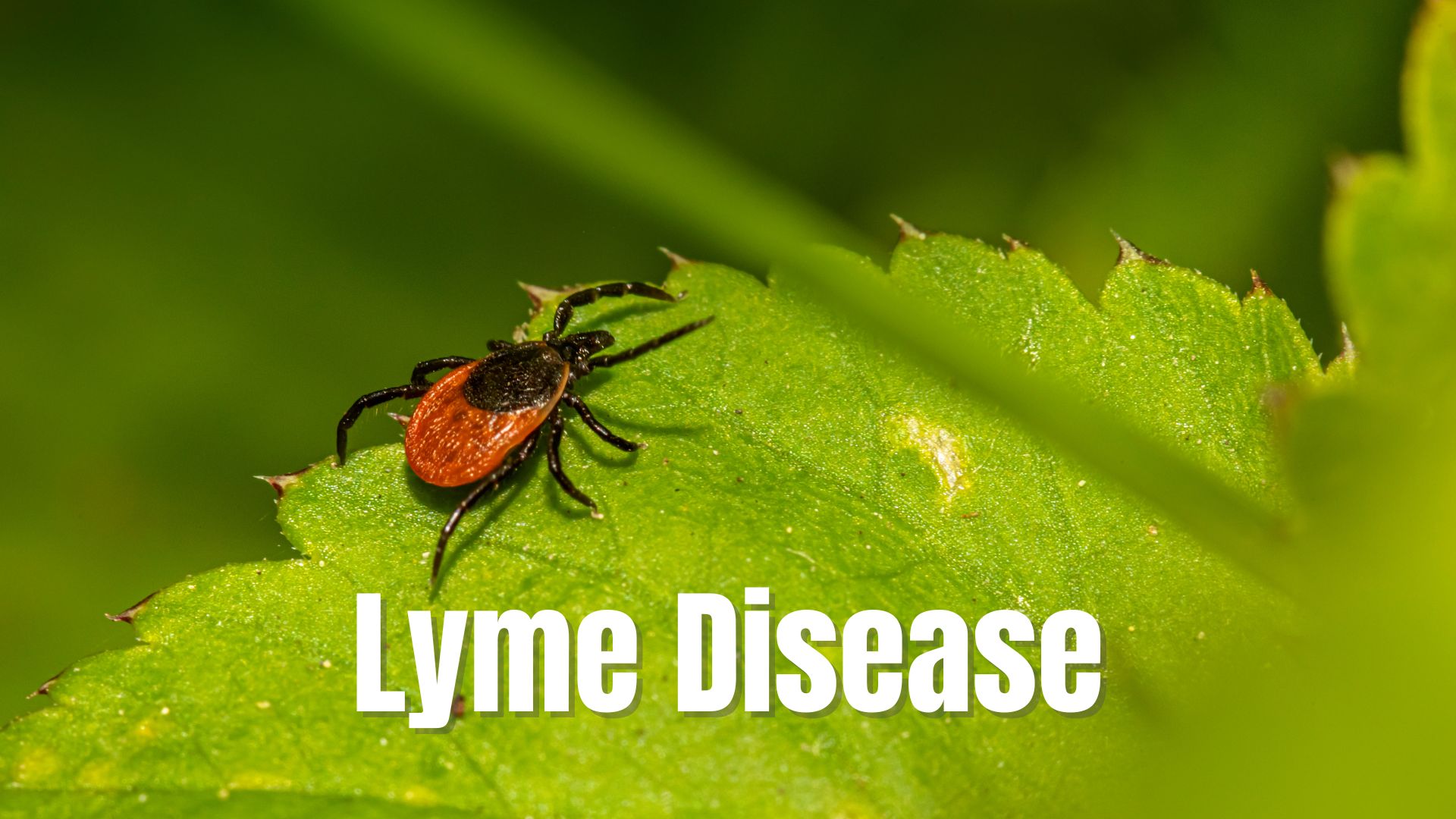
Lyme disease, also Lyme borreliosis, is a bacterial illness spread by certain tick species to people, dogs, and other animals. Borrelia burgdorferi is the spiral-shaped bacterium that causes Lyme Disease and can travel through the bloodstream to different body parts, like the joints, and cause trouble in the body. According to a global health analysis, 14% of people worldwide have had Lyme disease.
People who live or spend a lot of time in grassy or densely wooded areas where ticks that carry Lyme disease thrive are most likely to contract Lyme disease. Thus, it is vital to be cautious of the surroundings you are in. (Mayo Clinic, 2020)
Causes And Symptoms
Borrelia burgdorferi and Borrelia mayonii, transmitted by black-legged or deer ticks, primarily cause Lyme disease. Young brown ticks, barely larger than a poppy seed, deem them practically undetectable.
When someone is bit by a tick infected with Lyme disease, the bacteria enters the skin first and then the bloodstream. In most cases, a deer tick must be attached for 36 to 48 hours to transmit Lyme disease. If you discover a tick that appears bloated and connected, it may have fed long enough to transfer bacteria. A rapid removal of the tick may prevent infection in some cases. (Berger)
Early Symptoms And Warning Signs
Similar to a mosquito bite, a small, red lump frequently appears at the site of a tick bite or tick removal and usually disappears within a few days. This occurrence is not entirely linked to Lyme disease. However, within a month of infection, the following signs and symptoms may appear:
Rash: A spreading red area that occasionally clears in the center to form a bull’s-eye pattern may appear three to thirty days after an infected tick bite. Over several days, the rash (erythema migrans) can spread to 12 inches (30 centimeters). It is rarely uncomfortable or painful, but it may feel warm to the touch. Erythema migrans are one of the defining features of Lyme disease, but not all patients develop it. Some people get this rash in multiple places on their bodies. Fever, chills, fatigue, body aches, headache, neck stiffness, and enlarged lymph nodes are other symptoms that may accompany the rash. Severe joint pain and swelling most likely affect the knees, but the pain can spread to other joints.
Neurological Complications: Inflammation of the membranes surrounding your brain (meningitis), temporary paralysis of one side of your face (Bell’s palsy), numbness or weakness in your limbs, and reduced muscular action may occur weeks, months, or even years after infection. (Mayo Clinic, 2020)
Treating Lyme Disease
There are treatments for Lyme disease which includes antibiotics. The sooner treatment begins, the faster and more comprehensive the recovery.
Antibiotics Orally: Administered antibiotics are used to treat Lyme disease in its early stages. Typically, antibiotic treatments of 14 to 21 days are prescribed. However, other research indicates that courses of 10 to 14 days are similarly practical.[1]
Intravenous Administration Of Antibiotics: If the condition affects the central nervous system, your physician may recommend 14 to 28 days of intravenous antibiotic treatment. This eliminates infection, although it may take a while for your symptoms to subside.
When antibiotics are given through an IV, they can cause a drop in the number of white blood cells, mild to severe diarrhea, and colonization or infection with ntibiotic-resistant organisms unrelated to Lyme disease.
Some specialists feel that a predisposition to developing an autoimmune reaction adds to the symptoms of some Lyme disease patients. According to recent studies, additional research is necessary. (Mayo Clinic, 2020)
Can You Get Lyme Disease From Your Dog?
People are not directly exposed to Lyme disease infections from dogs. Lyme disease cannot be transferred between pets or between pets and humans other than through tick bites. However, a tick carrying a disease could enter your home on your dog and bite you. It is a good idea to contact your physician and veterinarian to determine whether other dogs or family members should be tested if there is an exposure in the home.
Don’t Put Off Treatment
Although Lyme disease is rarely fatal, putting off treatment can lead to a more severe form of the illness. Those who notice a distinctive rash or other possible symptoms should seek medical attention at the earliest.
Works Cited
“Lyme Disease.” Mayo Clinic, Mayo Foundation for Medical Education and Research, 24 Oct. 2020, www.mayoclinic.org/diseases-conditions/lyme-disease/symptoms-causes/syc-20374651
“Treatment of Lyme Disease.” Centers for Disease Control and Prevention, Centers for Disease Control and Prevention, 1 Mar. 2022, www.cdc.gov/lyme/treatment/index.html.
Meyers, Harriet. “Lyme Disease in Dogs: Symptoms, Testing, Treatment, and Prevention.” American Kennel Club, American Kennel Club, 8 Apr. 2022, www.akc.org/expert-advice/health/lyme-disease-in-dogs/#:~:text=Can%20I%20Catch%20Lyme%20Disease,fur%20and%20get%20on%20you.
Berger, Matt. “Lyme Disease: All the Symptoms.” Healthline, Healthline Media, 4 July 2017, www.healthline.com/health-news/do-you-know-all-they-symptoms-of-lyme-disease.
“Lyme Disease.” Mayo Clinic, Mayo Foundation for Medical Education and Research, 24 Oct. 2020, www.mayoclinic.org/diseases-conditions/lyme-disease/diagnosis-treatment/drc-20374655.





